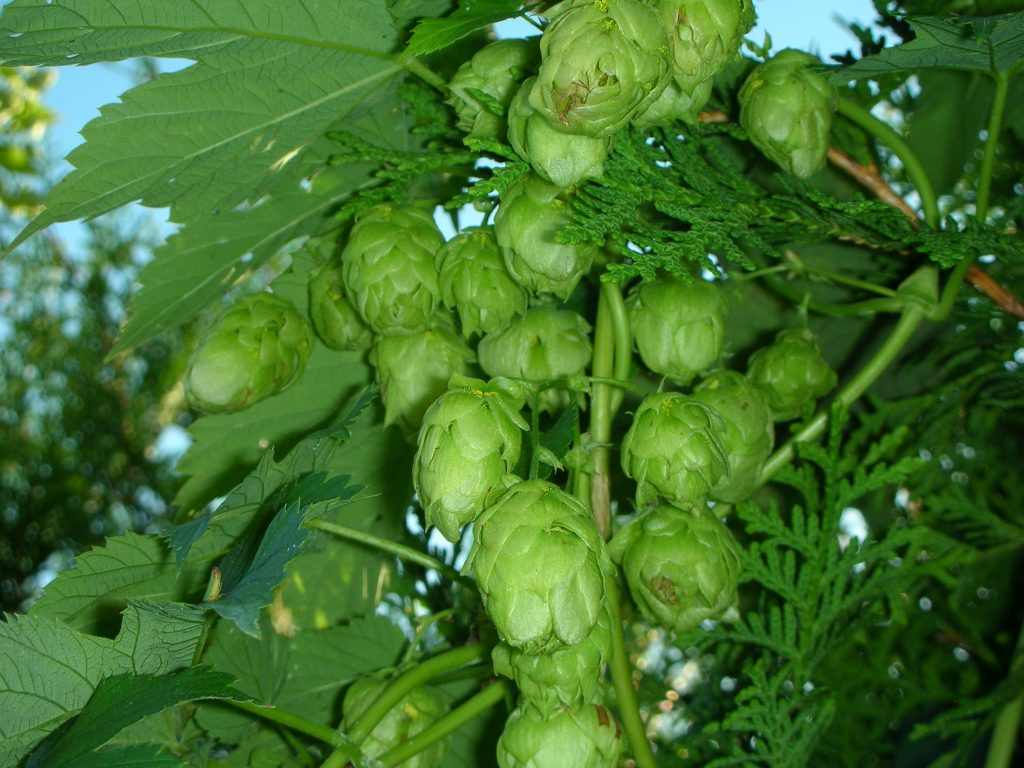 Especially when discussing historic Austrian beers, obviously Austrian hops, or to some extent, Cisleithanian hops, are often discussed. A lot has happened in terms of hops over the last 100 years in Cisleithania (the Austrian part of the Austrian-Hungarian empire after 1867), and I’d like to give a bit of an overview about it.
Especially when discussing historic Austrian beers, obviously Austrian hops, or to some extent, Cisleithanian hops, are often discussed. A lot has happened in terms of hops over the last 100 years in Cisleithania (the Austrian part of the Austrian-Hungarian empire after 1867), and I’d like to give a bit of an overview about it.
Historically, hops were grown only in certain regions of Cisleithania. The largest of these areas were the Saaz (which now belongs to the Czech Republic), the Mühlviertel (part of Upper Austria), the Waldviertel which lies in Lower Austria and is adjacent to the Mühlviertel, and Lower Styria, which now mostly belongs to Slovenia. In the nowadays Austrian part of Lower Styria, only in Leutschach there is still a hop-growing industry.
Each of these areas had their respective land races of hops. A land race is simply a variety of hops that was growing locally and was eventually domesticated, and they’ve traditionally been named after the respective local regions. Hence Hallertauer, Hersbrucker, Spalter, Tettnanger, Saazer, and so on.
Wait, why do only Saaz hops appear in that list of land races, but none from the Mühlviertel or Lower Styria? Because, as far as I was able to find out, Saaz hops are the only land race left of all the local hop varieties that were grown in Austria in the 19th century.
The first “victim” were the hops in Styria. The main hop variety for quite some time now is Styrian Golding resp. Savinjski Golding, which was introduced to Styria only relatively recently. The book “For The Love Of Hops” by Stan Hieronymus (p.167) claims this was in the 1930’s after Slovenian hop fields were destroyed by a disease and that the replacement was Fuggles misidentified as Goldings. slovenianhops.si claims that Styrian Goldings is a descendant of Fuggles and that it was introduced in the early 19th century. This seems highly unlikely, as Fuggles was isolated, categorized and named only in the 1860’s/70’s. But what seems to be secured is that the local land race in Styria was not resistant to a hop disease (some say powdery mildew), while the imported Styrian Goldings were, and thus completely overtook the local industry.
What I keep reading, most of the time without any source, is that Styrian Goldings was Anton Dreher’s favourite hop variety. This is total bollocks, as Anton Dreher died in 1863, before Fuggles was even released to the public. Also his son, Anton Dreher the younger, died in 1921, before Styrian Goldings started to be grown.
Hop growing in the Mühlviertel goes back several hundred years, with the first historic mention in 1206. The peak of hop production was in 1880. But in 1939, the hop industry came to a stand still, as Berlin ordered all hop farmers in Mühlviertel to destroy their plants. The hop industry was dead in the Mühlviertel until after World War 2. The “reforestation” of hops was initially done with English hops. That’s how the Malling hop variety made it to Austria, where it is still grown to this day. Later, Styrian Golding and Aurora were added, as well as Perle, Hersbrucker, Spalter Select, Saphir, and Tradition. The original land races don’t exist anymore, and aren’t grown commercially anymore. The same also goes for the Waldviertel, as it is geographically adjacent to the Mühlviertel, and both regions hop marketing and sales efforts have been combined since the early 1950’s.
That leaves the Saaz hops. Unlike the two previous regions, the local land race of hops was never destroyed by hop diseases or ordered to be removed. Due to its rather unique aromatic qualities and the widespread use in Czech beers, Saazer hops are still widely grown and have soared in popularity world-wide. It’s the only Cisleithanian hop land race left that is still commercially available to brewers, and in my opinion, the only good choice for historic Austrian beers.
This may seem counterintuitive at first, as you wouldn’t immediately associate Czech hops with Austrian beer, but there’s a very direct connection between Saazer hops and Austrian beer: Anton Dreher and the Kleinschwechater Brauerei. This brewer, well-known for the invention of the Vienna lager, a very early and (for that time) pale continental lager beer, used to own land in Michelob near Saaz, where he’d grow hops and barley to stay independent from the then relatively volatile market. It is safe to assume that the hop variety grown there is the local land race, and that he’d use the self-grown hops in his own beers. A year ago, when I tried to retrace the history of Vienna lager and the appropriate ingredients, I used Saazer hops as well, and their spiciness worked quite nicely in combination with the Vienna malt. Even a modern Austrian commercial recreation of that historic beer, Ottakringer’s “Wiener Original”, uses Saaz hops.
In any case, it would nevertheless be very interesting to learn whether any of these older land race hops have somehow survived in the seed bank somewhere around the world. If they do, then reviving them, like the historic English Farnham White Bine hop variety, would certainly be possible.

Hello,
I am looking for Herkules or any similar bitter variety CO2 extract. Do you may have these varieties? Looking forward to hearing from you.
kind regards,
Malaku Manaye
I‘m not a hop trader, so I unfortunately cannot help you.